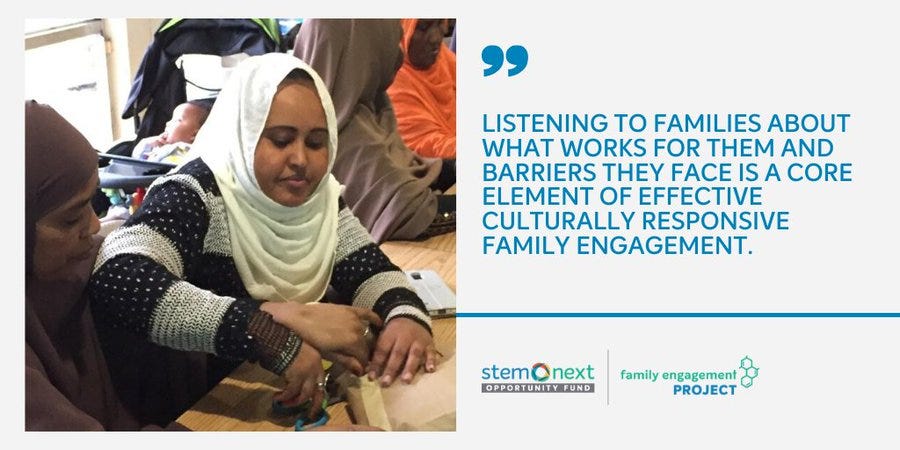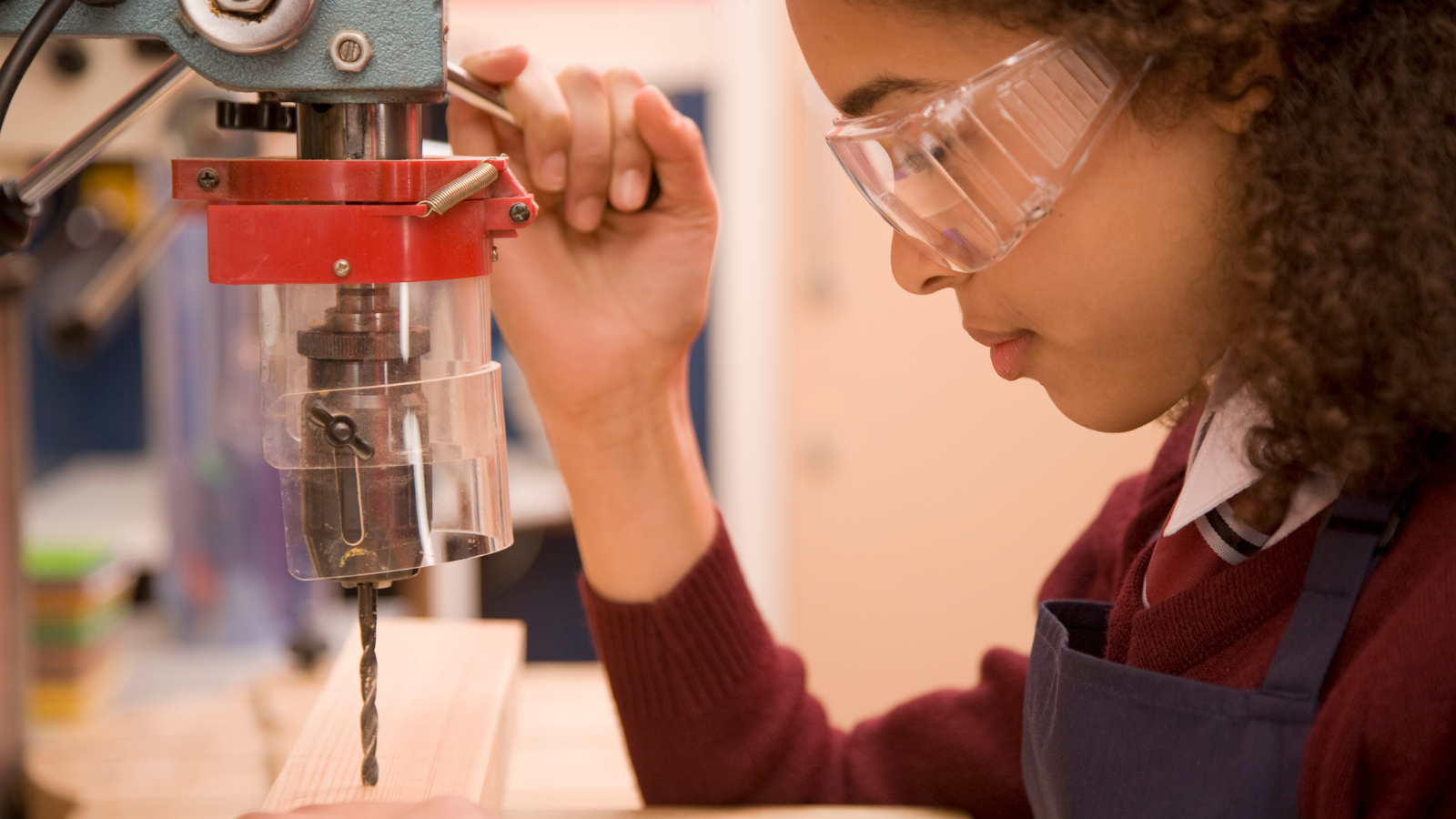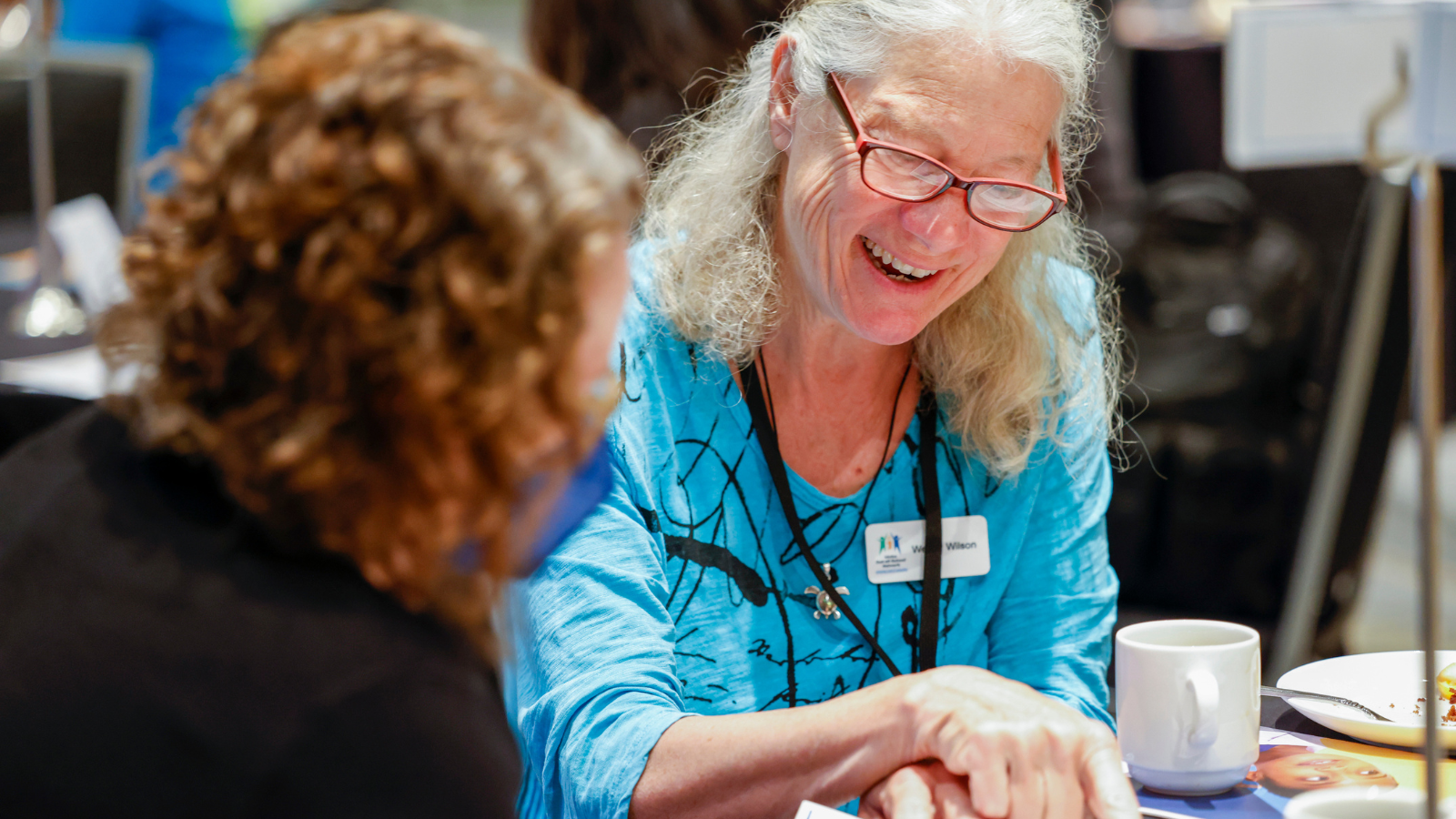Science, technology, engineering, and mathematics (STEM) can spark curiosity in children that can inspire a lasting love of learning. Interest may start with a project to restore a local watershed; a role model who shares her passion for electrical engineering, Star Wars, and her pets; words of encouragement from a teacher; or a shout out by a peer. The afterschool space is just the place for finding one’s love for all things STEM and making dreams come true.
STEM Next Opportunity Fund has a big new goal of inspiring 20 million more young people with STEM opportunities by 2027. Adventures in out-of-school time play an important role in helping accomplish this audacious goal. Here are Five Big Ideas to boost the power of afterschool, bringing the joy of STEM to youth and increasing STEM opportunities in every community.
1. Listen and learn with youth and families.
Make this your guiding principle for the school year. Start fresh and ask for input on elements of your afterschool programs to expand your usual offerings and increase diversity and inclusion. As you try new ideas, find out how they work for families. Rather than solicit feedback with surveys at the end of programs, start early so that there are no surprises or missed opportunities to make timely course corrections. Let caregivers know why you are asking for their ideas. Don’t forget to close the loop; show and tell families what you learned from their feedback and how you plan to use it. If there are ideas that you can’t put into practice, let families know and offer an explanation.
We know that caregivers are one of the biggest influences on youth participation in afterschool programs and in their persistence in STEM. Take time to get to know families before jumping into planning STEM activities this school year. Parents and guardians know their child and have insights that can help inform afterschool staff. Start this year off building relationships with home visits, calls home, welcome back notes, text messages, and conversations during pick up and drop off. Lead with a check-in on caregivers. When we put relationships with families at the center of this work, we can have greater collective impact in closing the opportunity gap in STEM.
Listen to youth and let them lead. We have seen firsthand the power of youth in the Million Girls Moonshot. Evie, Flight Crew member from South Carolina, offers advice for afterschool educators for this school year. “Let youth lead. Create safe spaces. It’s better to try things when you have a safe space to figure things out.” Yes!
Resources in support of Idea #1
Listening: The “Secret Sauce” for Impactful Family Engagement by Linda Kekelis offers ideas that include phone calls home and focus groups to improve STEM programs and empower families.
What Youth Think about Making Afterschool and Summer Learning Programs Accessible by Emily Young for the National League of Cities lifts up the voices of youth and incorporates their perspectives into practices and policies. What might you learn from youth in your community by listening to their ideas?
The Dear Teacher Letter from Learning Heroes invites caregivers to describe what their child is excited to learn about, what their child needs help with, favorite activities, and names of family members who support the child. Imagine how this information can support your activities and communications.
2. Make STEM for everyone, everywhere.
Afterschool STEM programs create greater impact and greater access by reimagining family engagement. Go beyond one-time events for families at the end of semester or school year. Think creatively to bring STEM opportunities to families and empower caregivers to support their children’s engagement in STEM. As you plan family engagement this year, try new ideas and consider a blend of in-person and virtual options and activities at home.
Encouragement is their superpower, although caregivers may not know it. Instead of proposing activities or events that add to their workload and anxieties, show caregivers how to integrate STEM into their everyday routines. Tap into their existing knowledge and skills about STEM.
Resources in support of Idea #2
Ready4K offers text messages with short, simple tips that fit into daily routines and that explain how these practices build skills.
This Multigenerational Tinkering video with Delia Meza at the New York Hall of Science is the perfect example of STEM that honors culture and STEM in the everyday lives of families. Every time we watch how Meza connects with families with food — making tortillas, sharing a meal, discovering STEM — we learn something new about the power of encouragement.
Remy Dou in an interview with the Center for the Advancement of Informal Science Education highlights the value of nurturing family conversations about children’s science interests. The takeaway — caregivers don’t need to be experts in STEM. With talk they can inspire a lifelong passion and support a STEM identity. How might you put this research into practice and support caregivers?
3. Dispel gender stereotypes and expand options.
Be mindful and expand options for all children as you plan for afterschool programs. STEM programs introduce so many wonderful opportunities to learn about coding and robotics and AI. Unfortunately, not all children see a place for themselves in these programs. They might if an instructor encouraged them or if a family member signed them up. We have seen the power of personal invitations in broadening participation in STEM. It is especially important to reach out to caregivers and make the case for STEM programs for girls. Caregivers might not consider these options and girls might not ask to participate in these programs due to stereotypes. When given a chance, girls thrive and discover that they do like STEM.
Resources in support of Idea #3
The Million Girls Moonshot is active in out-of-school programs in all 50 states. This school year, the Million Girls Moonshot is offering resources and training opportunities on a variety of topics including computer science, engineering, and family engagement.
Inspiring Curiosity from Early Childhood to Break Gender Stereotypes podcast with Amanda Sullivan hosted by the National Girls Collaborative Project is a must listen. Sullivan shares important research for educators and caregivers and practical ideas to make change in practices.
The Power of Caregivers podcast with Bunmi Esho and Linda Kekelis hosted by the National Girls Collaborative Project shares research and strategies to help caregivers and caring adults support girls’ interest, confidence, and success in STEM.
4. Sprinkle in career exploration.
“With their flexible, experiential, and youth-centered focus, afterschool and summer programs are well-suited to facilitate meaningful conversations between youth and STEM professionals who look like them, have similar backgrounds, and are successful in their careers.” We couldn’t agree more with STEM Next Deputy Director, Teresa Drew, in Conversations with Inspiring Role Models as a Catalyst for Belonging in STEM.
Don’t miss the opportunity to make connections between activities and careers related to STEM projects. Invite role models to come to an afterschool program and share their personal journey, lead a hands-on activity, and offer guidance and inspiration. These can be supplemented with virtual role models on the internet and in books. Share role models with caregivers and consider putting together a lending library with STEM role models for youth in afterschool programs.
Resources in support of Idea #4
EngineerGirl hosted by the National Academy of Engineering and FabFems supported by the National Girls Collaborative Project offer role models eager to share their passion for STEM in a variety of ways.
Techbridge Girls offers training to set role models up for success to engage girls from marginalized communities through videos, reflection questions, and more.
Afterschool Coaching for Reflective Educators in STEM offers training this fall on Nurturing STEM Identity and Making Career Connections.
5. Invest in professional development.
Just as impactful STEM engagement requires sustained opportunities, so too does professional development. Out-of-school-time leaders and practitioners are looking for practical ideas for putting research into action and for real-life examples of ways to overcome barriers.
STEM Next offers resources and training to support STEM in out-of-school time. STEM Next is offering professional development this school year through communities of practice on a number of STEM topics including math, family engagement, and program practices in support of girls. Through these learning opportunities, participants reflect, share strategies and resources, and create an action plan with partners for greater collective impact.
Resources in support of Idea #5
These STEM Next developed resources by Linda Kekelis, Bunmi Esho, Patty Allen, and Kathleen Traphagen offer a wealth of information with examples. Take a look!
STEM Family Engagement: A Planning Tool elevates best practices and facilitates professional development for impactful and equitable family engagement.
Field Guide: How to Host a Community of Practice shares lessons learned and resources and help jumpstart a successful community of practice.
The Essential Funders Guide to STEM-Focused Family Engagement makes the case for resources to support professional development and family engagement in support of STEM.
Let’s reimagine the possibilities for STEM in afterschool, and advance research, programming, and policy for the next generation this school year. Let’s ensure that all children and families have access to STEM opportunities in afterschool, at home, and in their communities. Will you join STEM Next and make a pledge to take up one of the Five Big Ideas in this blog?
—
STEM Next works toward dismantling the opportunity gap in STEM so that all youth can thrive and explore their potential. Sign up for our newsletter and learn of new opportunities in STEM this school year.
Linda Kekelis is an advisor on The Family Engagement Project at STEM Next. She has devoted her lifetime to supporting families, educators, and role models in encouraging girls and other underrepresented youth in STEM. Linda appreciates the examples of impact and resourcefulness she discovers in her work with out-of-school-time programs across the country and around the world. lkekelis@gmail.com @LindaKekelis
Ron Ottinger is Executive Director of STEM Next and former co-chair of the national STEM Funders Network and the National STEM Learning Ecosystem Initiative. As a national leader and expert in STEM learning, Ron has spent his career advocating for informal and out-of-school-time STEM education and has helped build collaborations among schools, science centers, communities, and afterschool programs that increase STEM learning opportunities for young people everywhere. rlottinger@stemnext.org @STEMNext






